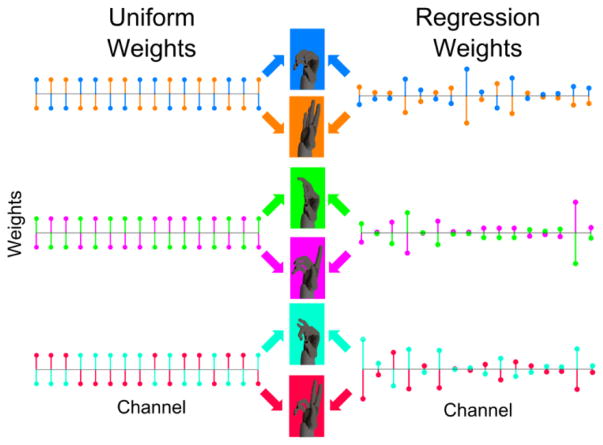Figure 3.
Schematic of channel weights for the 3D ADS decoder. The uniform weights on the left are either +1 or −1 for all 16 channels. Each dimension (power – blue/orange, pinch – green/magenta, tripod – cyan/red) has 8 positive weights and eight negative weights. If a weight is +1 (e.g. blue up and orange down in the power grasp dimension), then flexion of the given grasp is facilitated when the unit has a firing rate above baseline and extension is facilitated when the firing rate is below baseline. Conversely, units with −1 weights (e.g. orange up and blue down) facilitate extension with increased firing and flexion with decreased firing. The sum across all 16 units of the unit’s weight multiplied by its firing rate determines the net velocity of flexion/extension. In ADS control, only the dimension with the maximum absolute signal moves while the other dimensions are passively fixed. The regressed weights on the right are similarly used by the decoder, but can be different in their magnitude as determined by linear least squares regression.

